Thank you for visiting! By the way… any links on this page that lead to products on Amazon and other stores/partners are affiliate links Aquarium Store Depot earns a commission if you make a purchase.
Would you like to keep pet fish but don’t have much time to take care of them? All fish need regular care to stay healthy, but some fish are just so much easier to keep than others. In this post, we’ll highlight 15 amazing low-maintenance fish that you can keep. We’ll also cover the basics of fish care and tank maintenance so you know what to expect.
Let’s get started!
Key Takeaways
- Choose low-maintenance fish if you’re just starting out in the aquarium hobby.
- Low-maintenance fish are also great for busy fishkeepers who don’t have enough time for high-maintenance aquariums.
- All fish and aquariums need care and maintenance to stay healthy and beautiful. Set aside a few minutes each day to feed and evaluate your fish, and schedule one hour per week for tank maintenance.
- Small, heavily stocked aquariums require more frequent maintenance than larger, lightly stocked tanks.
What Are Low-Maintenance Fish?
Low-maintenance fish are species that are easy to care for, and don’t need much of your attention each day to stay healthy. So what should you look for when choosing low-maintenance fish? We have a list below of our criteria and a video from our YouTube channel to share with you. If you enjoy our content, be sure to subscribe as we post new videos every week!
- Hardiness
Hardy fish are the best choice because they can often go two weeks or more between water changes. Hardy fish are also more likely to survive if you’re a few days late on tank maintenance.
The amount of maintenance required depends just as much on your tank setup, feeding routine, and filtration, of course, but we’ll dive a little deeper into that later in the article.
- Diet
Low-maintenance fish are easy to feed. Choose fish that can be fed on easily available foods like tropical flake food, although it’s always a good idea to supplement their diet with convenient frozen foods like brine shrimp. Avoid fish with specialized, live-food diets.
- Temperament
Peaceful fish are the best choice for a low-maintenance community tank, especially if you don’t have much time to monitor your fish for aggression. More semi-aggressive fish species like the betta fish are great if you want just one pet fish to take care of.
15 Of The Top Low Maintenance Fish
Now that you know what to look for, here are 15 amazing low-maintenance species that you can keep!
1. Betta Fish
Use Coupon Code ASDFISH at Checkout
Betta Fish are one of the most beautiful varieties of freshwater fish available in the hobby. Easy to care for with plenty of varieties!
- Scientific Name: Betta splendens
- Care Level: Easy
- Adult Size: 2.5 inches
- Tank Size: 5+ gallons
- Temperament: Aggressive
- Origin: Thailand
- Diet: Carnivore
- pH: 6.5 – 8
- Temperature: 75 – 80°F
- School Size: 1 per tank
Betta fish are one of the most popular pet fish in the world and they make a great low-maintenance pet for beginners! These awesome tropical fish are hardy and easy to feed, and they can thrive in a tank of just 5 gallons.
Betta fish make wonderful aquarium pets but they have one downside. These aggressive fish are also known as Siamese fighting fish because they will attack each other if kept together.
Experienced aquarists can keep a group of females together in a large tank, but keeping just a single male is a much easier option.
2. Guppy
An undemanding fish that is a livebearer. Many varieties available
- Scientific Name: Poecilia reticulata
- Care Level: Easy
- Adult Size: 1 – 2.5 inches
- Tank Size: 10+ gallons
- Temperament: Peaceful
- Origin: South America & Caribbean Islands
- Diet: Omnivore
- pH: 7 – 8.5
- Temperature: 63 – 82°F
- School Size: 3+
Guppies are perfect low-maintenance fish for beginners and busy fish keepers. These fish are peaceful, hardy, and completely unfussy about their diet.
If you keep male and female guppies together they are going to breed sooner or later. The females produce live young, so breeding these fish and caring for the baby fry is super easy!
Males are usually very brightly colored fish, and they can be kept together in the same aquarium without females if you prefer them not to breed.
3. Zebra Danio
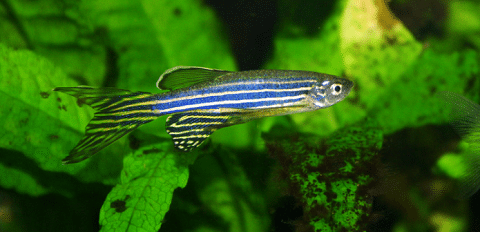
- Scientific Name: Brachydanio rerio
- Care Level: Easy
- Adult Size: 1.5 – 2 inches
- Tank Size: 15+ gallons
- Temperament: Peaceful
- Origin: India
- Diet: Carnivore
- pH: 6 – 8
- Temperature: 64 – 74°F
- School Size: 8+
Zebra danios are great low-maintenance pets. They are a super hardy species, and that makes them excellent beginner-friendly fish.
Zebrafish are not the most colorful tropical fish in the hobby, but their bold stripes and high activity level means they bring life to any freshwater fish tank. They are at home in cooler conditions, however, so many aquarists keep them in room temperature water.
Zebra danios are true schooling fish, so they will be happiest in a nice big group. Their busy nature also means they prefer a slightly bigger tank than other fish of their size.
4. Platy
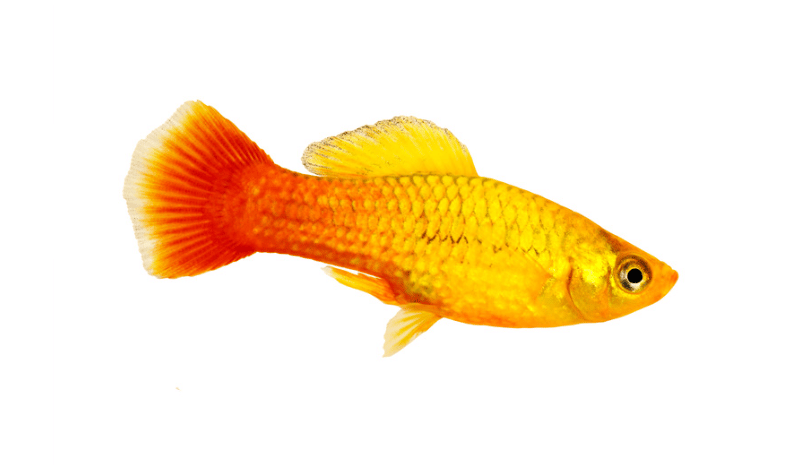
- Scientific Name: Xiphophorus maculatus
- Care Level: Easy
- Adult Size: 2 inches
- Tank Size: 10 gallons
- Temperament: Peaceful
- Origin: Central & South America
- Diet: Omnivore
- pH: 7 – 8.5
- Temperature: 70 – 80°F
- School Size: 5+
Platy fish are small, brightly colored, and super easy fish to take care of. These fish are related to guppies, and you can see the resemblance. Platies are livebearers, so they are very easy to breed.
It sounds kind of gruesome but the adult fish will eat the fry in most cases, so you don’t have to worry about them breeding out of control. Another option is to keep a group of females only. They’re just as pretty as the males but tend to be more peaceful fish.
Platies are omnivorous fish that are easy to feed. They are also very affordable and easy to find at most pet stores so they’re ideal for beginners.
5. White Cloud Minnow
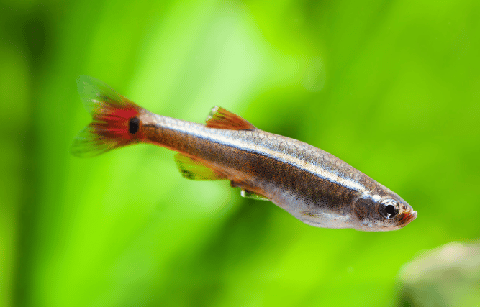
- Scientific Name: Tanichthys albonubes
- Care Level: Easy
- Adult Size: 1.5 inches
- Tank Size: 10 gallons
- Temperament: Peaceful
- Origin: China
- Diet: Omnivore
- pH: 6.5 – 7.5
- Temperature: 64 – 72°F
- School Size: 6+
White cloud mountain minnows are beautiful low-maintenance cold water fish for beginners. These fish live in mountain streams with a low water temperature in their natural habitat, so you can usually keep them without needing an aquarium heater.
The peaceful white cloud minnow grows to less than two inches, so you can keep a small school in a tank of just ten to fifteen gallons without any problems.
6. Neon Tetra
Use Promo Code ASDFLIPPROMO
One of the most popular freshwater community schooling fish available in the aquarium trade. Great neon blue colors!
- Scientific Name: Paracheirodon innesi
- Care Level: Easy
- Adult Size: 1.25 inches
- Tank Size: 15 + gallons
- Temperament: Peaceful
- Origin: South America
- Diet: Omnivore
- pH: 6 – 7
- Temperature: 70 – 77°F
- School Size: 6+
Neon tetras are great low-maintenance fish for beginners. These colorful freshwater fish are perfect for a community tank but are also a great choice for a single-species setup.
Keep a school of 6 or more neon tetras in a 15-gallon planted aquarium for a beautiful display tank that needs little maintenance.
7. Cherry Barb
- Scientific Name: Puntius titteya
- Care Level: Easy
- Adult Size: 2 inches
- Tank Size: 20 gallons
- Temperament: Peaceful
- Origin: Sri Lanka
- Diet: Omnivore
- pH: 6 – 7
- Temperature: 74 – 79°F
- School Size: 6+
Cherry barbs are good beginner fish that can thrive in community tanks or without other fish species. These peaceful creatures need the company of their own species to feel safe and confident, so keep a school of at least 6 individuals.
Feed your cherry barbs once per day, test their water once a week, perform a water change twice a month, and you should have years of happy fishkeeping!
8. Kuhli Loach
Kuhli Loaches are hardy bottom-dwelling fish. Nocturnal in nature. Gets along with many fish and tolerate of coldwater environments
- Scientific Name: Pangio semicincta
- Care Level: Easy
- Adult Size: 3.5 – 4 inches
- Tank Size: 15 gallons
- Temperament: Peaceful
- Origin: Southeast Asia
- Diet: Carnivore
- pH: 6 – 7
- Temperature: 70 – 79°F
- School Size: 3 +
Kuhli loaches are the ultimate low-maintenance fish. In fact, you might even forget that you have them!
These great-looking bottom feeders are pretty shy, and they usually come out at night. They love to search for leftover food from your other fish, so they really help to keep their tank clean.
Kuhli loaches should be fed a diet of bottom-feeder food to ensure that they’re getting the right nutrition, however. Drop a sinking pellet or two in each night before the lights go out and watch these adorable fish start searching!
9. Endler’s Livebearer
A very active and colorful livebearer. Smaller in size than guppies
- Scientific Name: Poecilia wingei
- Care Level: Easy
- Adult Size: 1 – 1.8 inches
- Tank Size: 10+ gallons
- Temperament: Peaceful
- Origin: Venezuela
- Diet: Omnivore
- pH: 7 – 8.5
- Temperature: 75 – 86°F
- School Size: 3+
Endler’s livebearers are very similar to their larger relative, the guppy. These equally colorful fish are great for small aquariums of ten gallons or more, and they get along perfectly with many other peaceful small fish.
Endler’s livebearers will interbreed with guppies, so avoid keeping the two species together if you plan on growing out any fry.
10. Harlequin Rasbora
A peaceful schooling fish. An ideal community fish. A great beginner fish
- Scientific Name: Rasbora heteromorpha
- Care Level: Easy
- Adult Size: 2 inches
- Tank Size: 10+ gallons
- Temperament: Peaceful
- Origin: Southeast Asia
- Diet: Omnivore
- pH: 6 – 6.5
- Temperature: 72 – 77°F
- School Size: 8+
The harlequin rasbora is a beautiful fish with vibrant colors and bold, characteristic markings. These schooling fish can be kept with a variety of different tank mates, and they are perfect for a small planted fish tank.
Their natural schooling behavior is one of the real drawcards for the species, so go ahead and pick up a school of at least 8 harlequins to appreciate all they have to offer.
11. Cory Catfish
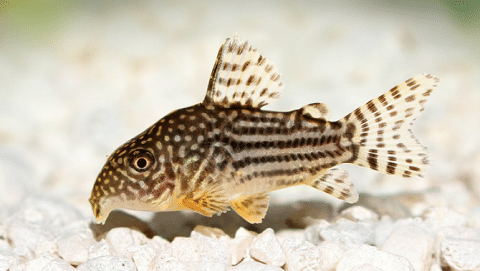
- Scientific Name: Corydoras spp.
- Care Level: Easy
- Adult Size: 1 – 4 inches
- Tank Size: 30 gallons
- Temperament: Peaceful
- Origin: South America
- Diet: Omnivore
- pH: 7 – 8
- Temperature: 74 – 80°F
- School Size: 5+
There are loads of different fish species in the corydoras group, and they all make awesome tank mates for community fish tanks.
These chunky catfish are great fun to watch as they cruise around the bottom of the aquarium, and their low-maintenance needs make them a good choice for beginners.
12. Black Neon Tetra
A variant neon variety. More reliant than neon and cardinal tetras
- Scientific Name: Hyphessobrycon herbertaxelrodi
- Care Level: Easy
- Adult Size: 1.5 inches
- Tank Size: 15+ gallons
- Temperament: Peaceful
- Origin: South America
- Diet: Omnivore
- pH: 5.5 – 7
- Temperature: 68 – 82°F
- School Size: 6+
Black neon tetras are another beginner-friendly fish that are perfect for a peaceful community tank. These schooling fish hang out in the middle to top layers of the aquarium, so your tank will always look busy if you keep them in a nice big group.
Black neon tetras are small fish, and they will thrive in a tank of just 15 gallons or more. These hardy fish can live for up to 5 years with good care. They are perfect tank mates for other peaceful fish like corydoras catfish and kuhli loaches.
13. Molly
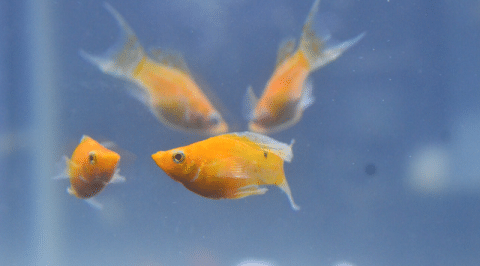
- Scientific Name: Poecilia latipinna/ P. sphenops
- Care Level: Easy
- Adult Size: 4 – 6 inches
- Tank Size: 30 gallons
- Temperament: Peaceful
- Origin: South & North America
- Diet: Omnivore
- pH: 7 – 8
- Temperature: 68 – 82 °F
- School Size: 4+
Molly fish are a great choice for fish keepers who want something a little larger. These American livebearers come in a variety of awesome colors and fin shapes, and they’re very easy to breed too.
These low-maintenance fish will thrive on a regular diet of fish flakes, but the odd serving of brine shrimp will ensure healthy fish.
Molly fish make a great choice for community tanks too. These peaceful fish are known algae-eaters, and they get along really well with other fish species! They also can be acclimated to live in saltwater tanks!
14. Black Skirt Tetra
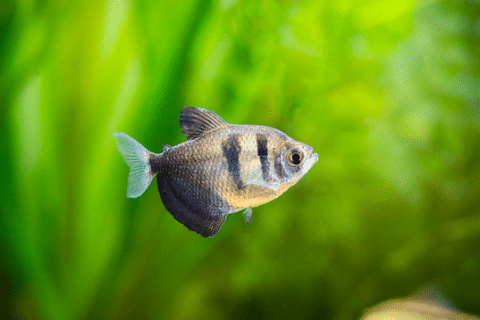
- Scientific Name: Gymnocorymbus ternetzi
- Care Level: Easy
- Adult Size: 2.4 inches
- Tank Size: 20 gallons
- Temperament: Peaceful
- Origin: South America
- Diet: Omnivore
- pH: 6 – 7
- Temperature: 68 – 78°F
- School Size: 6+
The black skirt tetra is an active but peaceful species. These fish might not have the same bright colors as something like a neon tetra, but they make up for it with a really cool body shape and bold markings.
These hardy fish are great for community tanks. They are social creatures, so keep them in a school of 6 or more in a fish tank with plenty of swimming space.
15. Honey Gourami
One of the more peaceful Gourami fish available in the hobby. Has a unique yellow coloration and only grows up to 2 inches in length
- Scientific Name: Trichogaster chuna
- Care Level: Easy
- Adult Size: 2 inches
- Tank Size: 10 gallons
- Temperament: Peaceful
- Origin: India & Nepal
- Diet: Carnivore
- pH: 6 – 7.5
- Temperature: 72 – 80°F
- School Size: 1+
Honey gouramis are beautiful tropical fish that can be kept in a community aquarium with a variety of tank mates. You can also keep a single fish for a really easy and low-maintenance fish tank.
These fascinating fish breathe atmospheric air so they should always have access to the water’s surface. This is rarely a problem unless you grow floating aquatic plants, however.
Care
Successful fishkeeping starts with the right tank and equipment. Here’s what you’ll need:
Tank Setup
- A big enough aquarium with a hood. It is best to choose an aquarium at least one size above the minimum recommended tank size of your fish.
- An aquarium filter rated for your tank size or larger.
- A heater. This is essential to keep the water temperature high enough for tropical fish. However, a heater is not always necessary for cold-water fish like white cloud minnows and fancy goldfish.
- Aquarium lighting is set on a timer for 6 to 8 hours each day.
- Substrate like aquarium gravel or sand.
- Decorations like driftwood, rocks, and aquarium-safe decorations.
Feeding
Modern fish foods offer convenient nutritionally complete meals for your fish. Providing the right amount of food can take a little practice, but once you get the hang of it you can complete this task in just a few seconds.
However, I recommend watching your fish for a minute or two during each feeding. That way you’ll be able to see if each fish is getting enough food, or if any timid fish are going hungry.
Your fish should be able to finish the food in 2 minutes or so. Remember, uneaten food equals poor water quality, and that means more maintenance for you.
Busy fishkeepers can feed their fish just once a day. Choose a time that suits you, like just before you leave for work or school, and make it part of your daily routine. If you need to leave home for more than a day at a time, you can even purchase an automatic fish feeder.
Best Auto Fish Feeder
Eheim's auto fish feeder is reliable, reasonably priced, and easy to use. A must for any busy fish keeper!
These devices release a preset amount of food at a preset time. Just make sure you test it before leaving town for the weekend.
Tank Maintenance
Even the easiest aquarium fish need some regular maintenance So what do you need to do to keep your tank clean and your fish healthy?
- Run High-Quality Filtration
Good quality filtration is essential for maintaining high water quality. Your aquarium filter will remove physical waste particles from the water to make your tank look cleaner, but that’s not all.
Tiny bacteria live inside the filtration media, and they are responsible for converting harmful chemicals like nitrite and ammonia into nitrates.
- Monitor Your Water Quality
Test your water regularly during the aquarium cycling process to monitor the levels of nitrates, nitrites, and ammonia in the water.
These nitrogen compounds build up from decaying food and fish waste. The water in a new aquarium is safe for fish when it reads zero parts ammonia and nitrate.
The results of your tests will help you work out a regular maintenance schedule. Remember, the more fish you have in your tank, the more waste they will produce, and the more maintenance you will need to perform.
- Regular Water Changes
You will also need to clean out your tank regularly to lower your nitrate levels. The Nitrates build up over time and the way to lower the levels is to remove a percentage of the old water and replace it with fresh new water.
Use a gravel vacuum or python system to suck up water from the bottom of the tank. That way you’ll be sucking up the fish waste and other organic matter too.
The Python is a mainstay in the fish hobby. Easily clean your aquarium by connecting this to your sink!
Replace the water you took out with fresh, dechlorinated water that is the same temperature as your aquarium water.
Where To Buy
All the recommended fish in this post are easy to pick up from most local fish stores. Alternatively, check out some of our recommended online retailers for great fish at great prices! We have a great partnership with Flip Aquatics. They sell some of the beginner fish listed here. You can use promo code ASDFLIPPOMO for a discount at checkout!
Use Promo Code ASDFLIPPROMO
Founded in 2010. Robert and his team at Flip Aquatics have set the standard for conditioned freshwater fish. One of the best selections of freshwater shrimp and nano fish on the internet
FAQs
Which Are The Easiest To Take Care Of?
Guppies are some of the easiest fish to take care of. They are hardy, peaceful, and adaptable, and they thrive on a simple diet of fish flakes.
What Is The Most Hardy Pet Fish?
Zebra danios are some of the hardiest freshwater fish in the aquarium hobby. These adaptable fish can survive most beginner mistakes, but they still deserve the best care they can get.
Which One Is The Most Low-Maintenance?
The Betta fish is probably the most low-maintenance fish. A single betta fish in a 5-10 gallon tank with good filtration requires relatively little maintenance if fed correctly.
Are They A Good Beginner Pet?
Many fish make great beginner pets if researched correctly. Fish like bettas, guppies, and danios are very beginner friendly and affordable, and they need little space to thrive. Some fish are very difficult to care for, so choosing the correct species and equipment is very important.
Final Thoughts
Keeping a beautiful freshwater aquarium full of healthy colorful fish doesn’t require more than a few minutes each day and an hour on the weekend a few times each month.
Choosing the right fish species can make all the difference, however, and the low-maintenance fish species in this post are just what you are looking for. Getting set up with a big enough tank, good quality filtration, and avoiding overstocking your freshwater aquarium are the keys to success!
What is your favorite low-maintenance tropical fish? Comment down below!
- About the Author
- Latest Posts
I’m thrilled that you found Aquarium Store Depot! Here you’ll find information on fish, aquariums, and all things aquatics related. I’m a hobbyist (being doing this since I was 11) and here to help other hobbyists thrive with their aquariums! I adhere to a high quality Editorial Process and Review products with real life field usage and practical analysis.

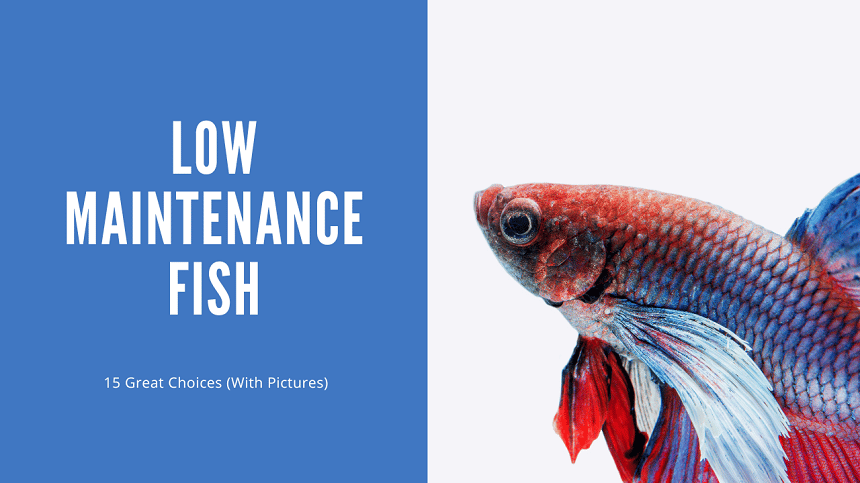
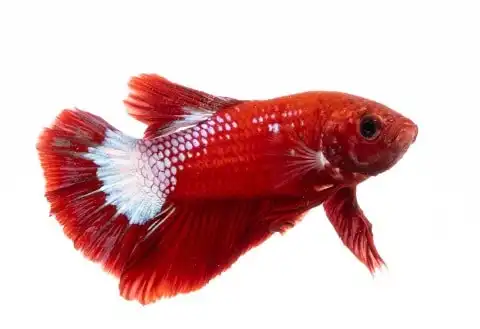
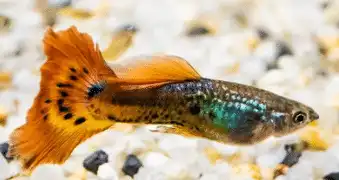
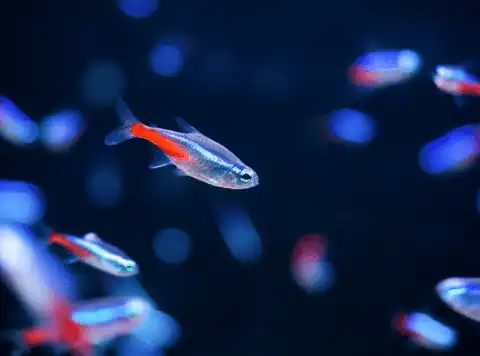
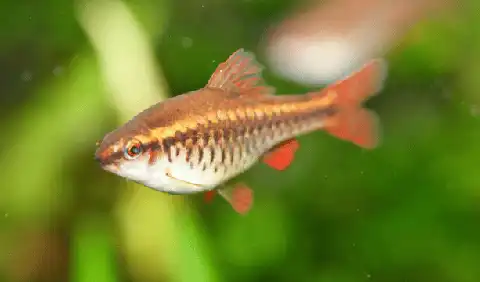

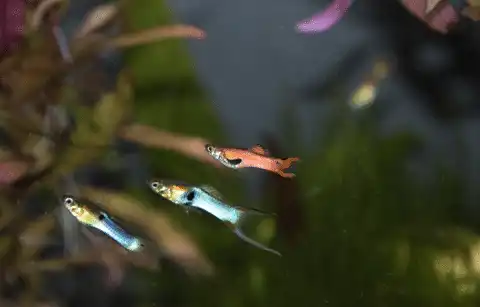

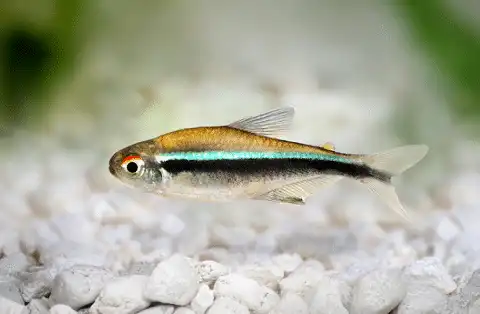

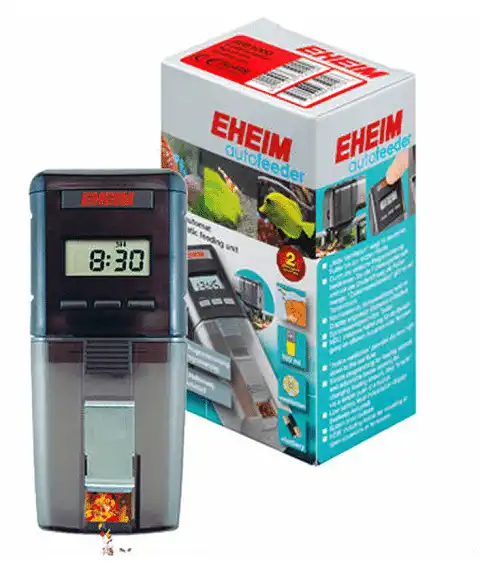
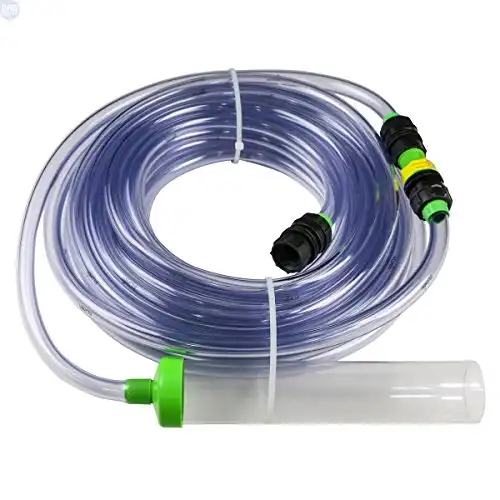
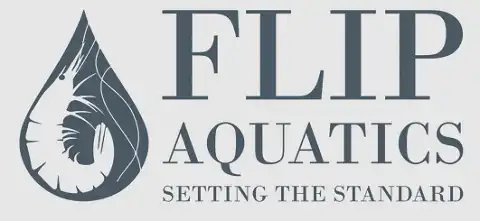




The other day, my brother mentioned he’d like to install a fish tank in his office to improve its appeal. He’s heard that people with stress benefit from watching fish swimming peacefully in an aquarium. I think he’d benefit from reading your intake on which fish are easier to maintain before he starts putting together his fish tank.
Thanks for passing along the article and reading 🙂
I have 3 nano tanks, one for neons, one for zebra danios and one for one honey gourami. I had two gouramis but one died and if this one passes I think I’ll go for Chili Rasboras.
I have a honey gourami, only fish, in a 5 gallon tank. I have an air bubble in the tank but here I read they come from slow moving waters. So is the bubble not a good idea? Thank you…
Gourami fish will create bubble nest like a Betta Fish. This is perfectly normal behavior. Shouldn’t be problematic